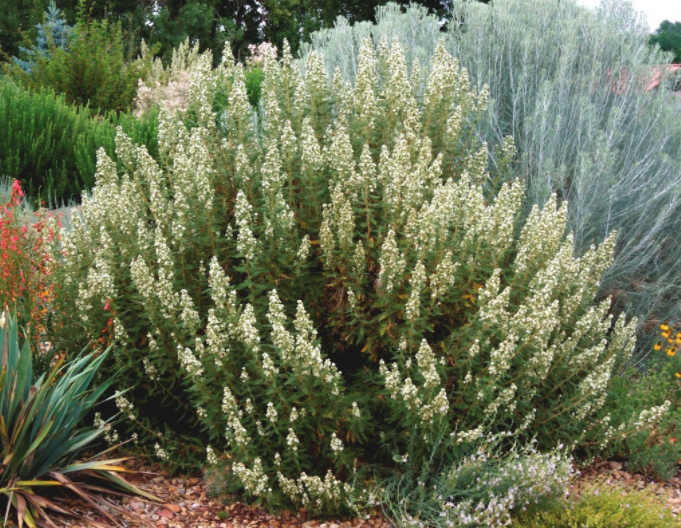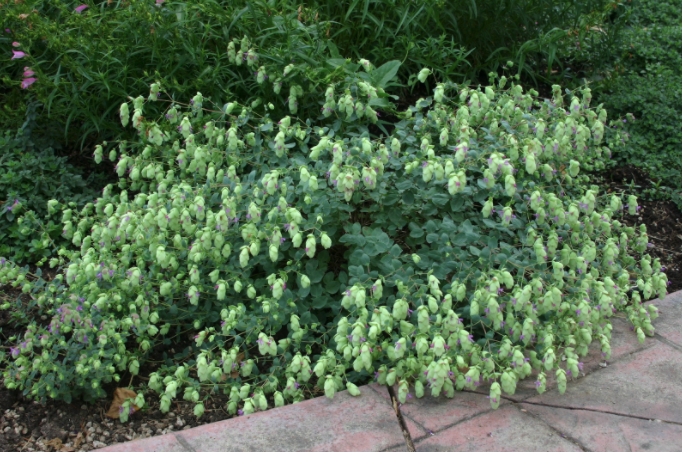We plan our gardens with the experiences of fall in mind—remembering the textures, colors, sounds and feelings that come with the changing of the foliage.
Autumn in the Colorado Garden
Plants begin their transformation in this Boulder, CO garden.

Plants begin their transformation in this Boulder, CO garden.
We plan our gardens with the experiences of fall in mind—remembering the textures, colors, sounds and feelings that come with the changing of the foliage.

Rudbeckia fulgida ‘Goldsturm’ and Agastache Cana intermingle bring vivid color to a water-wise garden.
Let’s delve into why water conservation is important and how perennial landscapes can contribute to the effort.
Rudbeckia fulgida ‘Goldsturm’, Centranthus ruber, Salvia nemerosa ‘Cardonna’, and Bouteloua gracilis ‘Blonde Ambition’ intermingle with late July blossoms in a Boulder, Colorado landscape.
Contrary to popular belief, the most densely planted gardens require the least amount of maintenance.
After decades of experience, we have found some of our favorite plant combinations that thrive in the Colorado climate.
Despite its dry heat and alkaline soil, Colorado flaunts colorful gardens with plants well-adapted to its natural conditions. Through years of observation, we have gained a repertoire of knowledge surrounding our local plant palette. That’s why we love what we do. We’ve spent years forming a relationship with the landscape and learning its intricacies as they reveal themselves. This month, we’re sharing a few of our favorite Colorado plants that thrive in the summer heat.
Heliopsis helianthoides - False Sunflower
This yellow beauty in the sunflower family shows radiant blooms from June to August. It grows 3-6 feet tall with a spread of 2-4 feet and attract butterflies to the garden.

Echinops ritro - Globe Thistle
Known for its bold, globular form, Echinops ritro adds distinct structure to the garden. Showing a blue color and intriguing texture, the flowerhead displays its form throughout the year. Rightly named, the greek roots of the word refer to a hedgehog appearance. You can expect Globe Thistle to reach about 4 feet tall and bloom from July to September.

Chamaebatiaria millefolium - Fernbush
Fernbush gives the appearance of being evergreen with its buds that remain visible through the winter months. This 3-5 foot tall native plant has aromatic white blooms that last from mid-June to August and its leaves are thought to have medicinal uses (Native Americans used the leaves in tea to settle an upset stomach).

Phlomis cashmeriana - Cashmere Sage
This late spring to early summer bloomer grows to be 36-60 inches tall, showing lavender-pink towers of color that turn to ornamental seedheads in the fall and winter. The Phlomis stalks add intriguing form to the garden.

Origanum libanoticum - Oregano Hopflower
A cascading perennial, Origanum looks best where it can flow over a planter wall. Quite literally, the blooms resemble hops and show a gradient of chartreuse to lavender. The long bloom (June to September) provides interest in the garden for most of the season. Origanum stays low at .75-1.5 feet and spreads 1-1.5 feet.

Jamesia americana - Cliff Bush
Jamesia prefers dry shade, especially at the base of a cliff or boulder where its roots can be kept cool. Clusters of waxy white flowers, reddish bark, and brilliant autumn colors make it a lovely option for the year-round garden. Look for it in the wild and you're sure to find some growing near the cliffs.

Carex rosea - Rosy Sedge
This sedge plant creates mats of soft, fine texture in the shade of your garden, offering a vivid lawn alternative in the landscape. Carex adapts to wet and dry soil, as well as shade and sun, making it the perfect plant for tough spots.

Brunnera macrophylla - False Forget-me-not
With vibrant heart-shaped leaves, Brunnera spreads across the shade of your garden floor and shows delicate blue flowers that rise to 18” in the early spring and summer. For a magnificent textural effect, layer the bold leaves of Brunnera with more delicate foliage types in the garden.

Chasmanthium latifolium - Northern Sea Oats
Northern Sea Oats create a tall, vivid backdrop in the shade of the landscape and will tolerate a variety of growing conditions. The “oat-like” cascading seedheads bring unique texture and winter structure, making them an ideal choice for year-round interest.

Phalaris arundinacea 'Picta' - Ribbon Grass
The wide, variegated leaves of Ribbon Grass provide the garden with interesting foliage contrasts. It grows in wide clumps to 2-4 feet tall and tolerates a wide range of growing conditions. Attractive white seed heads bloom mid-summer.

The xeric garden—misconstrued as a barren and unflattering landscape—deserves a different narrative. While many people picture a landscape filled with swaths of rock and singular desert plants, the xeric garden can easily blossom into the opposite. Let’s look at some Tree of Life projects that practice the principles of xeriscape (and dispel some myths along the way).
We welcome spring as a season of new life, fresh perspective, of warmth and color and calm. It’s the time of year when nature most closely meets our biological and psychological needs to make us feel happy, hopeful, and safe. Learn more about the science behind why springtime makes us feel so good.
The garden exposes a different way to comprehend time. Each season brings its own composition of color, texture, and experience, and each plays its role in the holistic beauty of the space. We participate in the toil, the work, the tending—and in its time, the garden reveals its beauty.